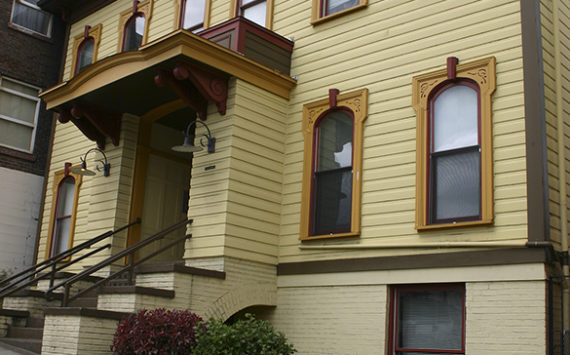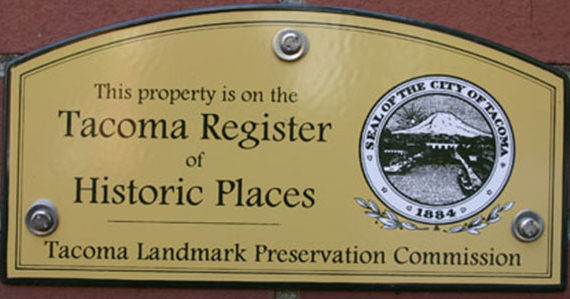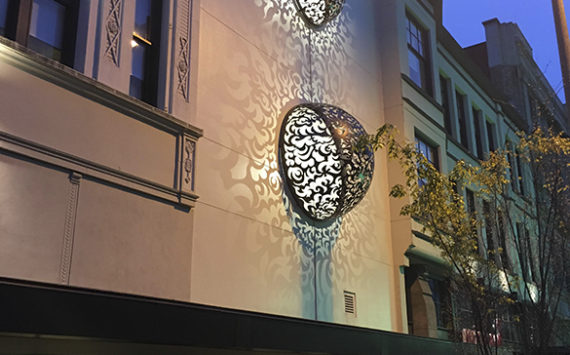A designation by the federal Environmental Protection Agency that labels Tacoma and Pierce County as areas of poor air quality and with a high concentration of particles that contribute to adverse health effects has angered several Tacoma City Councilmembers, according to a discussion during yesterday’s council study session at City Hall.
At issue for Tacoma Mayor Bill Baarsma and many councilmembers is whether a proposed boundary unfairly targets Tacoma and Pierce County, and fails to consider whether areas such as Federal Way and Gig Harbor should be included in the zone.
Last spring, results collected at a monitoring station located at South L Street violated stricter EPA standards, which led two agencies — Puget Sound Clean Air Agency (PSCAA) and the Washington State Ecology Department — to create a so-called “non-attainment zone” and state implementation program that would focus efforts on improving air quality. PSCAA hosted meetings over the summer to gather public comments on a proposed boundary. In October, Pierce County and PSCAA delivered two separate proposed boundary recommendations.
The boundary recommended by the PSCAA and the Dept. of Ecology is roughly bordered by Federal Way to the north, Fort Lewis to the southeast, and Gig Harbor and the Tacoma Narrows to the west. The boundary submitted by Pierce County roughly includes Central Tacoma and stretches south. In December, PSCAA hosted a public hearing on the two proposed boundaries before submitting a letter to the EPA recommending the South L Street station as the focus of the final non-attainment boundary.
No other city in Washington State received the non-attainment designation, according to the PSCAA, though Marysville and Darrington posted elevated results.
Previously, the EPA’s standard was 65 micrograms per cubic meter. The agency recently changed the standard to 35 micrograms per cubic meter. As a result, seven monitoring stations through Tacoma and Pierce County recorded air-quality that violated the new standards:
— 2301 Alexander Avenue (Port of Tacoma tideflats) / 45.7
— 5625 52nd St. (Chief Leschi School) / 38
— 6229 So. Tyler St. (Lincoln High School) / 40.5
— 402 E. 56th St. (Stewart Heights Park) / 50.7
— 7802 So. L St. / 57.1
— 5830 So. Pine St. (Edison Elementary School) / 43.7
— 5371 Steilacoom Blvd. SW (USGS Field Office) / 39.8
“It’s the standard that changed, not that Tacoma polluted more,” commented Councilmember Mike Lonergan.
Still, the designation has added an unfavorable stigma to Tacoma’s tongue-in-cheek “gritty city” moniker.
Tacoma Mayor Bill Baarsma yesterday was outraged by the dubious honor. “Why not include Federal Way or Gig Harbor?” he asked. He pointed to one boundary recommendation that clearly shows a cut-off between Northeast Tacoma (part of the non-attainment zone) and Federal Way (excluded from the zone). “The [proposed boundary] line suggests, ‘Cross the street into King County, and you’re fine.’ That’s not true.”
“We know this is a politically charged decision,” said Dennis McLerran, PSCAA executive director. “You can argue about how big or large the boundaries. But we tried to make a technical decision [based on data].”
McLerran said his agency has already started working with the city and county to improve air quality. Approximately 300 households have taken advantage of an offer to swap out wood stoves, which contribute to poor air quality. They also plan to look at ways to reduce diesel pollution from cargo ships and passenger buses. Periodic burn bans are also effective. The agency also plans to conduct additional monitoring and emission inventory analyses. And a stakeholder group will convene to strategize for emission reductions.
Still, even if Tacoma and Pierce County implemented aggressive mitigation plans tomorrow, it could take up to five years before the EPA removes the designation, according to McLerran.
“I’m unhappy to hear we may not be able to get out of the designation after five years,” said Councilmember Julie Anderson, who was frustrated by the city’s limited ability to determine the non-attainment boundary, and wanted to make sure the city had control over a strategy to improve air quality.
She also wanted to know the specific consequences should the city and county fail to improve air quality standards through a state implementation program that will receive final approve from Gov. Chris Gregoire next month.
“Worst-case scenario: the EPA takes over the program,” said McLerran.
After Gov. Gregoire submits her recommendation, the EPA will have 10 months to issue final approval on the boundary zone and state implementation plan.
City Council steamed at poor air quality designation
Tags: Bill Baarsma, Chief Leschi School, Chris Gregoire, City Council, City Hall, Councilmember Julie Anderson, Councilmember Mike Lonergan, Dennis McLerran, Edison Elementary School, Environmental Protection Agency, executive director, Fort Lewis, Gig Harbor, Governor, King County, Lincoln High School, Marysville, Mayor, Pierce County, Puget Sound Clean Air Agency, South L Street station, Stewart Heights, Tacoma, Tacoma City, USGS Field Office, Washington State Ecology Department







